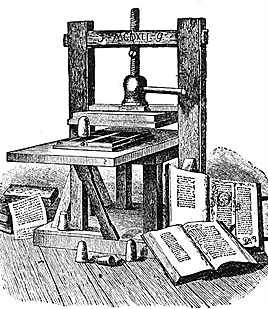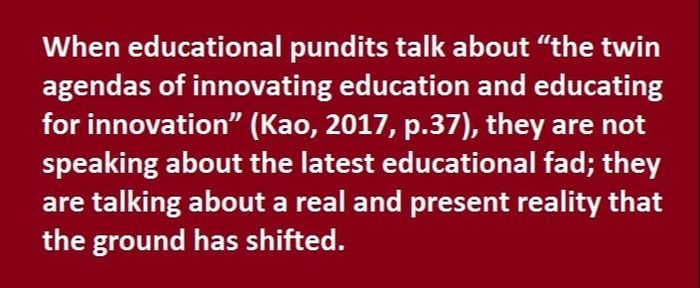 Gandalf and Pippin riding to Gondor (John Howe)
Gandalf and Pippin riding to Gondor (John Howe) ‘It is upon you. I have ridden on its wings. Let me pass! I must come to your Lord Denethor, while his stewardship lasts. Whatever betide, you have come to the end of the Gondor that you have known. Let me pass!’ (Tolkien, 1999, p.11).
Gandalf is warning the people of Gondor that whatever happens, one thing is sure: everything they know is about to change. In many ways, this is the same situation that educators are facing. The messenger is at the gates of our educational institutions declaring that we have come to the end of the “world that we have known” and (therefore) the beginning of a new educational system the world now needs. When educational pundits talk about “the twin agendas of innovating education and educating for innovation” (Kao, 2017, p.37), they are not speaking about the latest educational fad; they are talking about a real and present reality that the ground has shifted. The world not only is changing but has changed... whether educators want it to or not. Like the gatekeepers in Gondor, teachers are sceptical—is this another false doomsday prophet? Over the last 50 years of schooling, educators have been through the undulating sea of one edu-fad after another. Harebrained schemes, silver-bullet solutions and panaceas to educational problems are regular occurrences in education. Every educational guru is seen sceptically as a snake-oil salesman selling books, workshops and keynote speeches. Is innovation just another "buzz word"? What I am discovering in my research on innovation and creativity is that this isn’t the next flash-in-the-pan gimmick. The Director for Education and Skills for OECD writes, "The demands on learners and thus education systems are evolving fast [...] Today schools need to prepare students for rapid economic and social change than ever before, for jobs that have not yet been invented, and to solve social problems that we don't yet know will arise" (Bialik, et al., 2015, p.1). Likewise, John Kao writes, "We live in a time of VUCA [volatility, uncertainty, complexity and ambiguity]. Times of stability require only incremental adjustment and fine-tuning. Times of VUCA require bold innovation" (Kao, 2017, p.31). Kao suggests the following metaphor: the tsunami-like tidal wave of change is breaking upon our shore; we need to learn how to ride the wave or we will be swept away.
 Johannes Gutenberg's Printing Press (c. A.D. 1450)
Johannes Gutenberg's Printing Press (c. A.D. 1450) This is why I am asking this central question: How can we as educational leaders foster innovation and creativity in our students, teachers, classrooms and schools to better prepare our students for life, learning and employment in the Age of Innovation?
It is time to stop doubting and to start changing.
References
- Bialik, M., Fadel, C., and Trilling, B. (2015). Four-Dimensional Education. Boston: Center for Curriculum Redesign.
- Horn, M. (2017). The Job of Innovation. Independent School, 76(3), 22-28.
- Kao, J. (2017). Education in the Age of Innovation. Independent School, 76(3), 30-37.
- Tolkien, J.R.R. (1999). The Return of the King. London: Harper Collins.

 RSS Feed
RSS Feed
